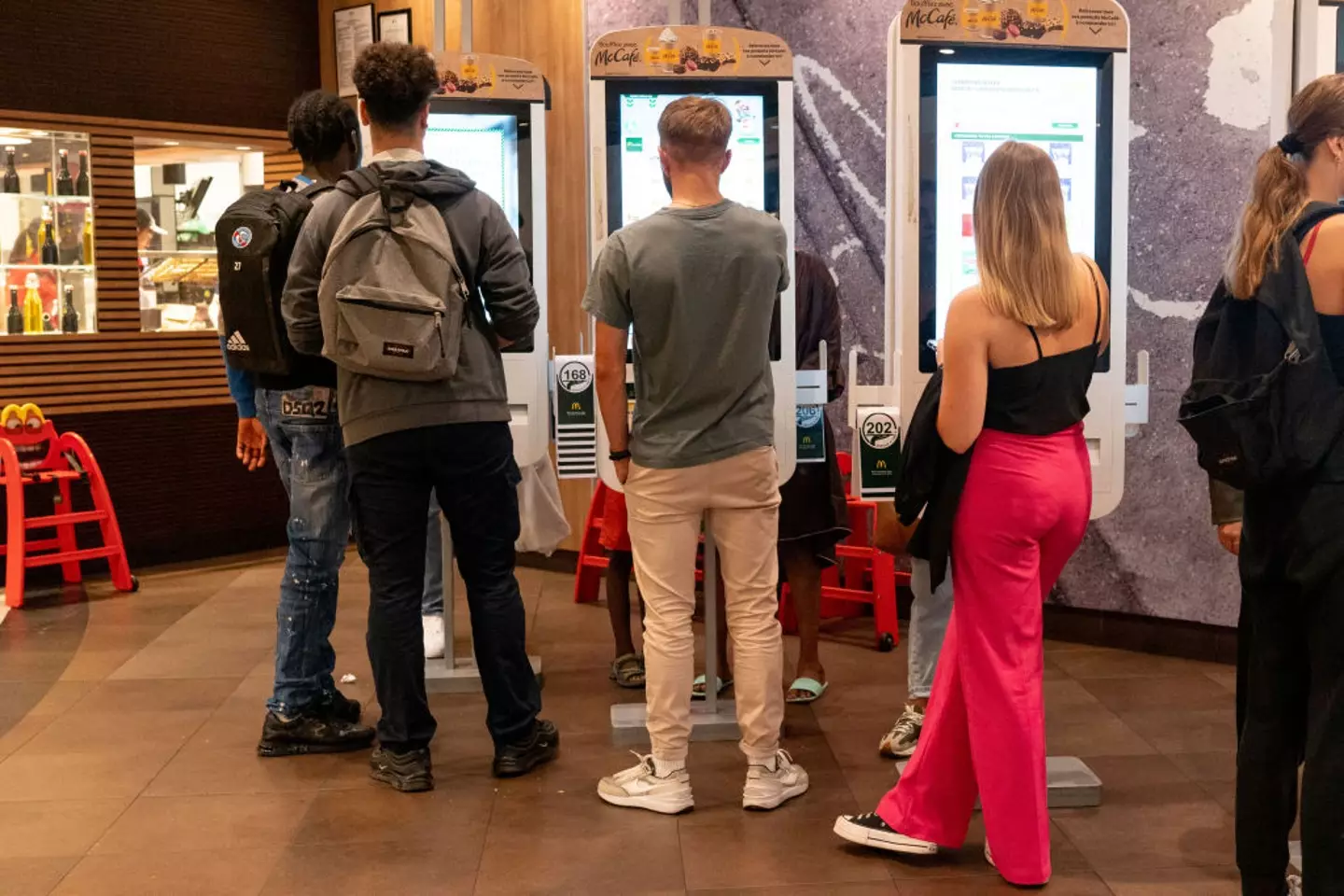
None of us have been immune to the inflation that’s run rampant on consumer goods over the past five years.
Covid-19, the war in Ukraine, bad harvests resulting from global weather events, and now trade uncertainty amid tariffs from the US mean everything’s become more expensive.
In the US, research from Finance Buzz points to a trend in the fast food industry that makes matters worse for hungry punters. Apparently, the average menu prices at fast food outlets across the pond jumped by 39% to 100% between 2014 and 2024, with inflation sitting at 31% over that time.

Advert
Along with these increased prices, one major change to how McDonald’s in particular runs its stores might be leading customers to order more and spend more than they originally planned: the self-service kiosk.
First launched in 2015, McDonald’s has since rolled self-service kiosks out to all of its US locations. They’re convenient and speed up the queues, even if you might find yourself wondering how recently the one you’re using was given an antibacterial wipe.
However, the way they’re set up may have an effect on what you choose to order, with TikToker Manvir Dosanjh (@manvir.dosanjh) explaining the theory in a video that’s been viewed over 178,000 times as of May 2025.
In the video he runs through a series of choices he makes through the ordering process that will feel very familiar to anyone who’s used one of these self-service kiosks.
Advert
“It’s almost like a supermarket store shelf, where the most expensive is at eye-level, and the rest, the cheaper items, are down at the bottom,” he says when making his first selection: a burger.
Once he’s picked one of the more expensive burger options, he’s then prompted to choose whether he wants a meal or a standalone burger.
“This is subtly tricking you into believing that the burger alone isn’t enough to satisfy your hunger,” he says. “So what are we gonna do? We’re gonna make it a meal.”
As it’s added to his cart – and, of course, when anything else is added to his cart later on – a friendly little animation plays.
Advert
“They want to reward you for adding things into your cart,” says Dosanjh, referring to the slot machine-style dopamine hit that such animations can trigger.
From there, the kiosk reverts back to the menu rather than the checkout, increasing the temptation to make more additions.
Meanwhile, the total basket value is placed right at the bottom with relatively small font. Dosanjh calls this a ‘dark pattern’, referring to a concept whereby consumers are ‘tricked’ into making decisions that that look more marginal than they actually are.
He offers other examples of dark patterns such as opt-ins for cookies on websites and signing up for email marketing.
Advert
Having simulated a typical order, adding a McFlurry along the way, Dosanjh has racked up a $26.75 (£19.99) bill, noting that the various psychological tricks incorporated into the kiosks can easily encourage you to spend more than you intended.
As to whether customers spend more at self-service kiosks, there’s some data to back it up.
Randy Garutti, CEO at Shake Shack, reportedly told investors that kiosk users typically spend 10% more at their outlets than customers who speak directly with cashiers.
Elsewhere, Samsung Business Insights reported that ‘at one taqueria…8.2% of customers added a suggested item to their basket, increasing the average ticket price by $6.73. At the ramen restaurant, 12.7% of customers added suggested items, making their baskets worth 30.6% more than a standard basket’.
Advert
That’s a pretty wide range between different outlets and restaurant types, but it seems that self-service kiosks can typically expect to take more from customers than traditional cashier setups.
As for comments on Dosanjh’s video, many fellow TikTokers shared his scepticism over self-service kiosks and dismay over price increases in general.
“I used to spend about $6 for a box of 20 piece chicken nuggets... now you only get 6 nuggets for that. Let that sink in,” said one user.
“Still better than standing in line behind the person who acts like they’ve never visited a McDonald’s before,” said one who sees the lighter side of life.
Others dismissed the theory, saying they and many others are above such so-called trickery.

“Bruh it’s a helpful self service menu… the majority of people would know what they want,” said one such user.
“They’re not tricks, just options,” said another.
One fate tempter said: “If you’re lame enough to be fooled by a touchscreen, you deserve it.”
A final thought: “Honestly I don’t even care I’m too broke for their tactics to even apply to me.” Silver linings, and all that.
FOODbible has approached McDonald's for comment.
